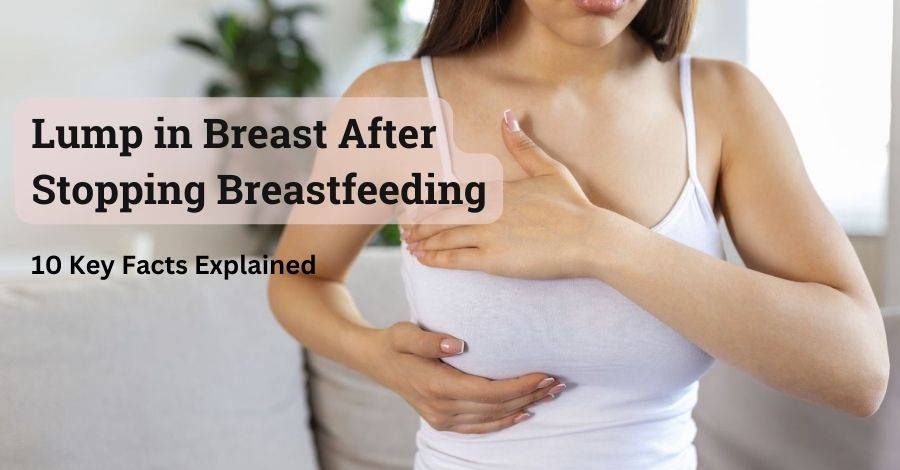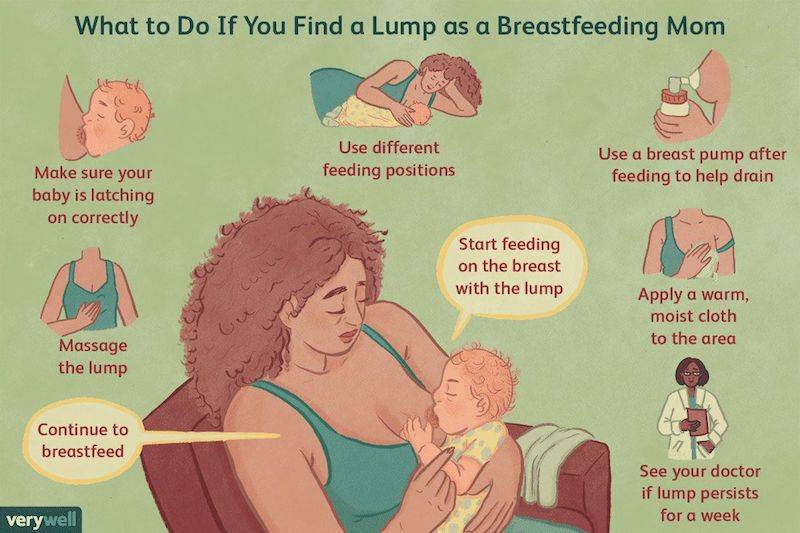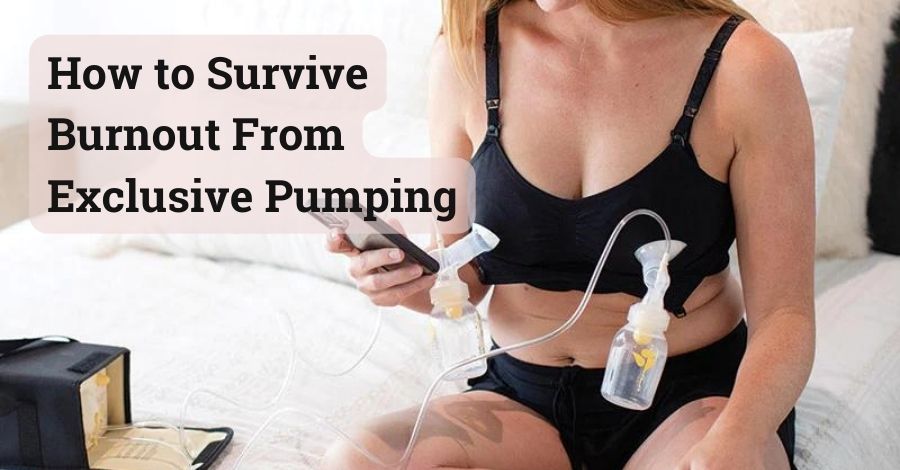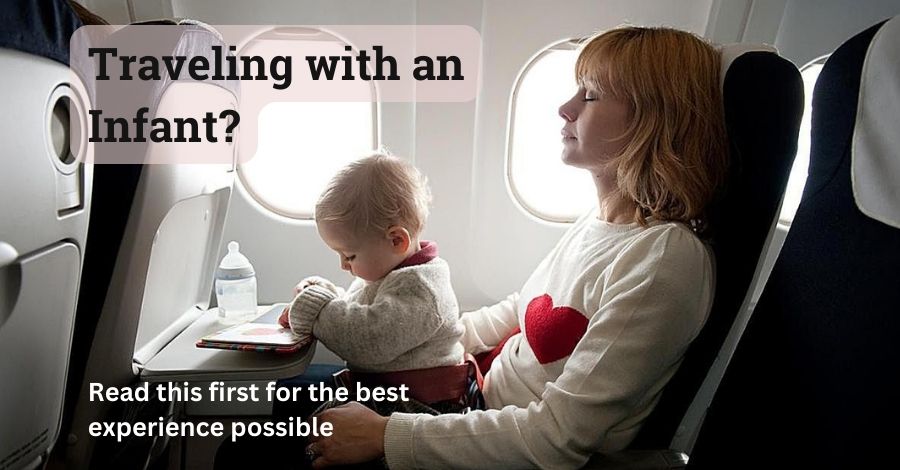
Key Points
- lump in breast after stopping breastfeeding are usually not cancerous but should be checked by a doctor.
- Common causes are milk-filled cysts (galactocele), infections (mastitis), hormonal changes, and damaged fat (fat necrosis).
- Regular self-exams are important.
- See a doctor if a lump persists, changes size, causes nipple discharge, or is painful.
Hey moms! If you’ve recently stopped breastfeeding and found a lump in your breast, it can be a little scary. But don’t worry—most lumps are not cancer. It is still a good idea to check with your doctor to be sure. Let’s discuss about some common reasons for lumps after breastfeeding and what you should do. Keep reading.
Common Reasons for Breast Lumps After Weaning
1. Galactocele
A galactocele is a type of milk-filled cyst that can form if a milk duct gets blocked. This can happen after you stop breastfeeding. These lumps often feel smooth and soft and are usually painless. Doctors can confirm a galactocele with an ultrasound. Sometimes, they might take a sample of the fluid to make sure it’s just milk. The good news is that galactoceles usually go away by themselves with time. They often don’t need surgery. So, don’t worry, mom!
2. Mastitis and Abscesses
Mastitis is an infection that occurs when milk gets stuck in the breast. It happens more often while you are breastfeeding. It can also happen after you stop that. Mastitis can make your breast red, swollen, and painful. If it’s not treated, it might develop into an abscess, which is a painful lump filled with pus. Mastitis is usually treated with antibiotics, and if an abscess forms, it might need to be drained by a healthcare provider.
3. Fibrocystic Changes
Fibrocystic changes are harmless changes in your breast tissue that can make your breasts feel lumpy or uneven. These lumps are usually caused by hormonal changes, which can happen after you stop breastfeeding. They might feel sore and can change with your menstrual cycle. To check these lumps, your doctor might do a breast exam and use tests like an ultrasound or mammogram.
4. Hormonal Changes
When you stop breastfeeding, your body goes through big hormonal changes. These changes can lead to lumps called fibroadenomas. These lumps are usually harmless. Fibroadenomas are solid lumps that aren’t cancerous. They usually feel smooth and can move around. To find out what they are, doctors will often use an ultrasound. If needed, they might do a biopsy to make sure the lumps are not cancer.
5. Fat Necrosis
Fat necrosis occurs when the fat in your breast gets damaged. This usually happens from a minor bump or bruise that you might not recall. It can create a hard lump in your breast. Even though it might feel concerning, fat necrosis is generally not harmful. Doctors will use imaging tests and sometimes a biopsy to make sure it’s not cancer. Once they confirm it’s not cancer, you usually don’t need any more treatment.

What to Do if You Find a Lump
1. Self-Exams
Get into the habit of checking your breasts regularly. Checking your breasts each month helps you get to know what’s normal for you. This way, it’s easier to notice any changes.
2. See Your Doctor
If you find a lump, see your doctor. They will check your breast and may recommend tests like an ultrasound or mammogram. These tests help figure out what’s causing the lump.
3. Diagnostic Tests
An ultrasound is usually the first test done to look at a lump. It helps doctors tell if it’s a fluid-filled cyst or a solid mass. Sometimes, you might need a mammogram or MRI for more details.
4. Biopsy
If the tests aren’t clear or if the lump looks suspicious, your doctor might recommend a biopsy. This means taking a small sample from the lump to check if it’s cancerous or not.
When to Be Extra Cautious
Most lumps after stopping breastfeeding are not serious, but you should get in touch with your doctor if:
- If a lump doesn’t go away after a few weeks, especially if it’s still there after your period, get it checked.
- Any lump that changes quickly in size or shape needs to be looked at.
- Any new discharge from your nipple, especially if it’s bloody, should be checked out.
- Look out for changes in the skin over the lump, like dimpling or puckering.
- If you have ongoing pain with the lump, it’s a good idea to see your doctor.
Final Thoughts
Finding a lump in your breast after stopping breastfeeding can be stressful. But don’t worry too much. Most of the time, these lumps are harmless. Regular self-exams and quick visits to your doctor can help you stay on top of your health. Whether it’s a galactocele, mastitis, fibrocystic changes, or something else, understanding what might be causing the lump can ease your mind and guide you to the right care. Always consult with your healthcare provider to create a plan that works for you.
References
- What Causes Lumps in Breasts of Breastfeeding Women? – https://www.healthline.com/health/breastfeeding-lump#1
- Weaning: stopping breastfeeding – https://raisingchildren.net.au/babies/breastfeeding-bottle-feeding-solids/weaning/weaning#
- Breast Problems After Breastfeeding – https://www.webmd.com/parenting/baby/after-nursing
- Breast Changes After Breastfeeding – https://www.whattoexpect.com/first-year/breastfeeding/breasts-after-breastfeeding/

Hi, I’m Lindley! I’m a stay-at-home-mom sharing all of the tips and tricks I learn throughout my motherhood journey. I’m now navigating through wife life and being a mom while blogging my crazy adventures. I’m so glad to have you along for the ride!



